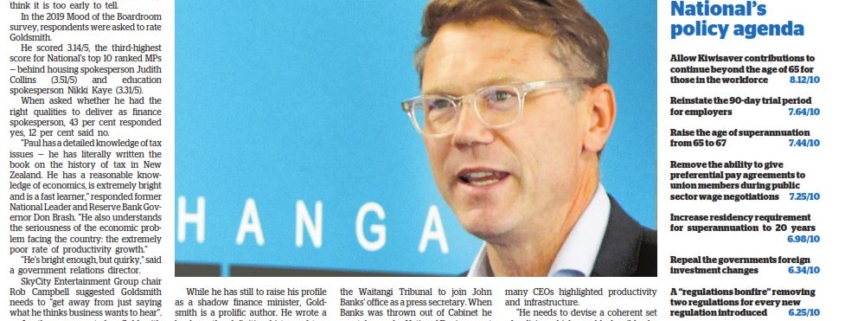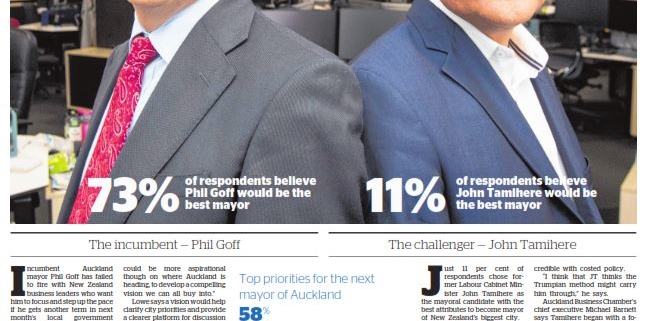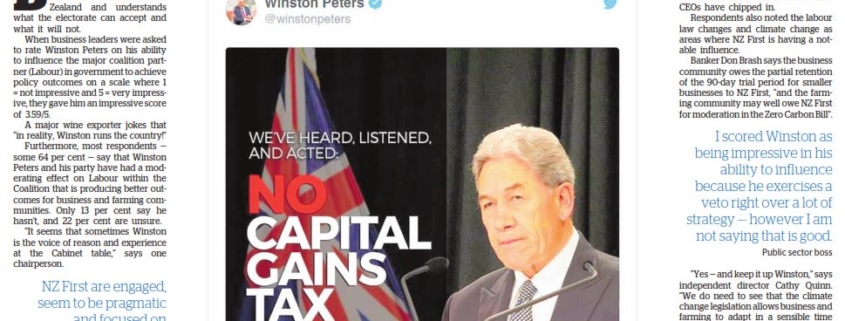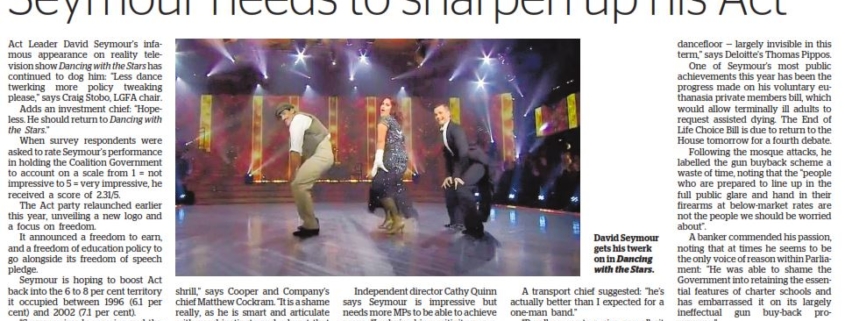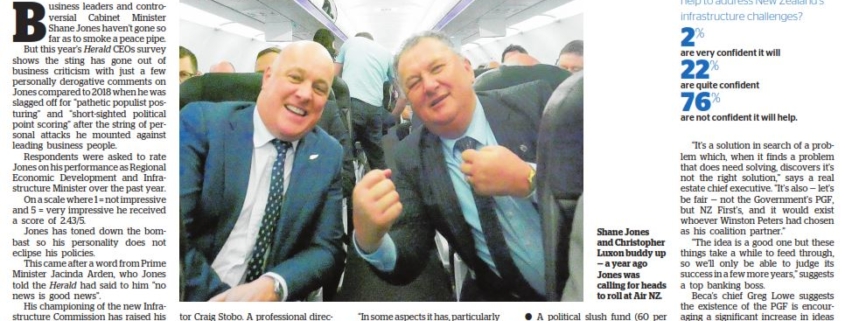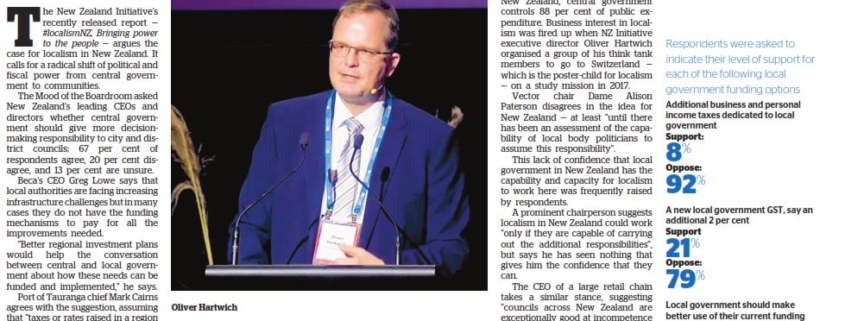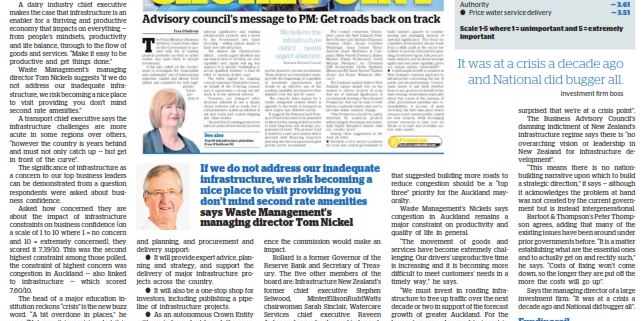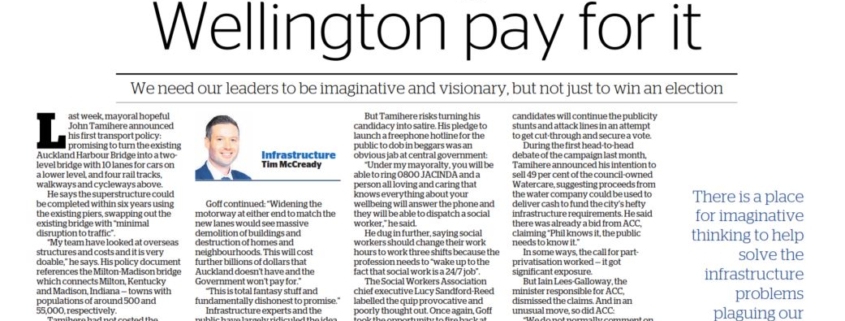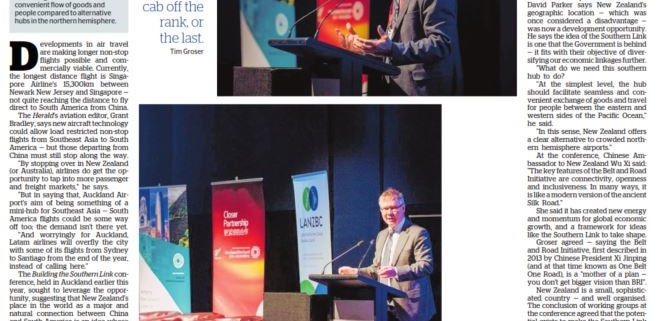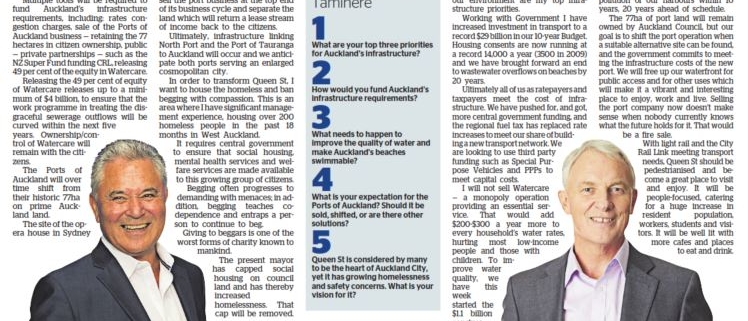http://bit.ly/2lgRUYy
Finance spokesman advised to get a coherent set of policies writes Tim McCready
Business leaders gave National rising star Paul Goldsmith their third highest ranking among the party’s top 10, but when it comes to the right qualities to deliver as finance spokesman many think it is too early to tell.
In the 2019 Mood of the Boardroom survey, respondents were asked to rate Goldsmith.
He scored 3.14/5, the third-highest score for National’s top 10 ranked MPs — behind housing spokesperson Judith Collins (3.51/5) and education spokesperson Nikki Kaye (3.31/5).
When asked whether he had the right qualities to deliver as finance spokesperson, 43 per cent responded yes, 12 per cent said no.
“Paul has a detailed knowledge of tax issues — he has literally written the book on the history of tax in New Zealand. He has a reasonable knowledge of economics, is extremely bright and is a fast learner,” responded former National Leader and Reserve Bank Governor Don Brash. “He also understands the seriousness of the economic problem facing the country: the extremely poor rate of productivity growth.”
“He’s bright enough, but quirky,” said a government relations director.
SkyCity Entertainment Group chair Rob Campbell suggested Goldsmith needs to “get away from just saying what he thinks business wants to hear”.
Another suggested Goldsmith needed to “get some charisma”.
With just three months as finance spokesman it is not surprising 45 per cent of survey respondents are still unsure if Goldsmith has what it takes to deliver as finance spokesperson.
Goldsmith was appointed in a June reshuffle after former National Cabinet Minister Amy Adams announced she would retire from Parliament in 2020.
“We haven’t seen enough either way,” says an investment firm’s chief executive.
“It is still early days, but I believe he has the right qualities from his early changes and comments,” says Barfoot & Thompson director Peter Thompson. “Today’s Mood of the Boardroom debate will be his first real test.”
While he has still to raise his profile as a shadow finance minister, Goldsmith is a prolific author. He wrote a book on the definitive history of taxation in New Zealand (We Won, You lost, Eat That) and the history of Fletcher Building. He is also a biographer, covering the pantheon of New Zealand business leaders including John Banks, Don Brash, Sir William Gallagher, Alan Gibbs and the Myers family.
In Gibbs’ biography, Goldsmith wrote that at one-point Gibbs asked him: “Paul, when are you going to stop living vicariously, writing about other people’s lives and get up and do something yourself?” After his maiden speech in Parliament, Goldsmith said Gibbs laughed down the phone at him: “I meant get up and do something genuinely useful; not go into politics!”
Goldsmith got his first taste for politics when he moved from a role with the Waitangi Tribunal to join John Banks’ office as a press secretary. When Banks was thrown out of Cabinet he was taken on by National Environment Minister Simon Upton. After National’s 1999 defeat he worked in Helen Clark’s Labour Government as a staffer for former Cabinet Minister Phil Goff.
He entered Parliament as a National list MP in 2011 and went on to hold the Commerce, Science and Innovation and Tertiary Education portfolios in the last National Government.
After the 2017 election, Goldsmith aligned himself closely with National leader Simon Bridges.
As economic and regional development spokesperson, he raised his profile through blistering attacks on Shane Jones’ administration of the Provincial Growth Fund.
In an open-ended question on what Goldsmith’s key priority should be, many CEOs highlighted productivity and infrastructure.
“He needs to devise a coherent set of policies which would plausibly deliver a meaningful improvement in New Zealand’s rate of productivity growth,” says one respondent.
Said an energy boss: “Joining the narrative together on economic, environment, trade, social, infrastructure into a compelling, long-term and understandable (street-level) vision.”
“Creating a framework for stability and investment that does not constrain growth,” responded an automotive boss.
Other advice for Goldsmith included the need for him to “get really clear on how all parts of society can win under a National government”, and to “have clarity regarding National party policies and being able to articulate them clearly.”

